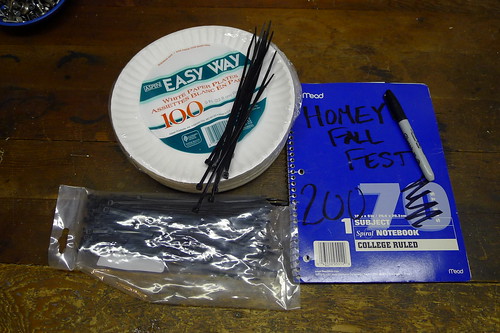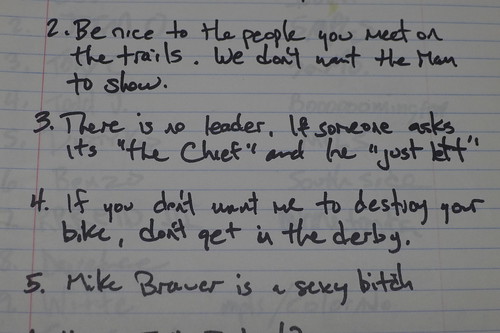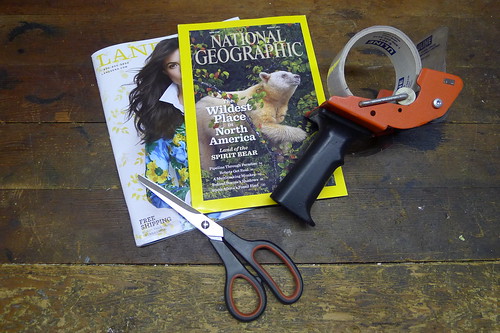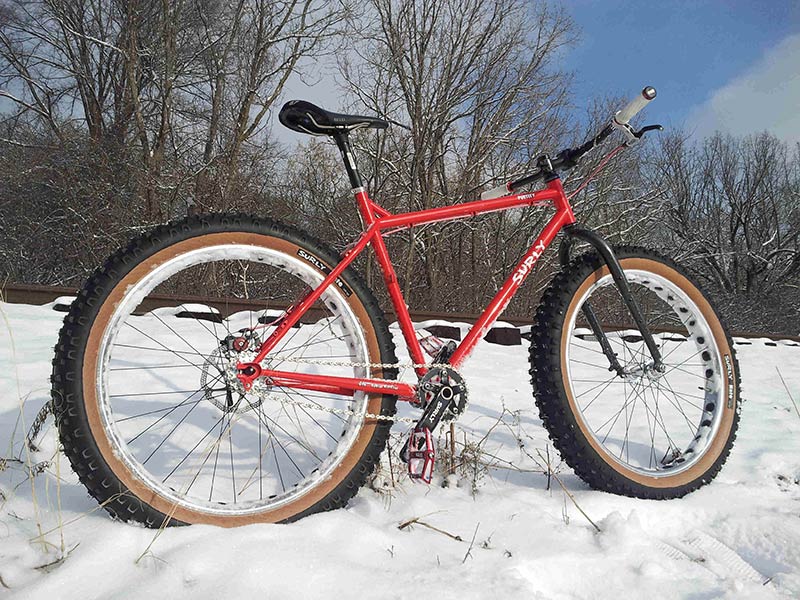Tires
Riding a good tire is a lovely thing to experience. A good quality, conditions-appropriate tire run at an appropriate pressure for the terrain and rider actually helps one ride more confidently and comfortably. There are five basics to consider when using a tire. These are the things primarily contributing to a tire's performance.
This is a very important aspect of regular maintenance and the single easiest way to tune any ride. Tire pressure can be altered to tweak what you want from the ground and your bike. Appropriate tire pressure depends on rider weight, tire size, and riding style, which considers speed and rider finesse. If you are not already experimenting with tire pressures you should be. A tire run at high pressure will feel faster, partly because of lower ground friction due to decreased footprint and partly because of terrain feedback transmitted though the tire instead of absorbed by it. But a high-pressure tire will not conform well to the ground surface and, being hard, it will harsh your ride. Conversely, running pressure too low will result in a wallowing, slippery feeling ride and an increased risk of flatting. There is a window between these extremes wherein you can actually ride just as fast or faster than you can at high or low pressures because your tires are conforming to the ground surface and absorbing static from the terrain without fully deforming. Riding high pressures often results in less traction and comfort, reducing one’s ability to flow efficiently. So it behooves the regular rider to play around with different pressures in different tires on different terrains.
It’s good to play around with pressures, but not all tires will do well at low pressures. Small volume tires require higher pressures simply to sustain distance between the rim and the ground, but larger volume tires operate within a lower range of pressures than smaller tires. Larger tires, since they can be run at lower pressures, tend to flex more. Many casings can prematurely deteriorate if they experience too much flex over time. Using an extreme example, fat bike tires, we had issues with the sidewalls of our early Endomorph 3.7" tires. They tended to deteriorate at the places of high flex in the sidewalls under heavy use. Some people running tubeless tires experience the same issues using tires designed for use with inner tubes. We are now on our 4th or 5th casing design, a unique, purpose-specific casing construction resulting in responsive tires that enjoy a longer, more predictable life, but it took deliberate study and design to solve the issue. Which brings us to point number 2...
The casing is the round structure of the tire, onto which a riding surface or tread is applied. It is constructed of fabric embedded in rubber. The wall thickness and casing construction of your tire will determine a lot about how your bike handles. Thick-walled, low TPI (threads-per-inch) tires generally will not conform as well to the ground and tend to be heavier. Conversely, a super thin-walled casing tends to be less durable than thicker-walled tires. Casings interplay directly with tire pressure, so play around with tire pressure to test casings for feel, resilience, and grip. I prefer round tires, rather than flattened or egg shaped profiles. I have found some very respectable low- to mid-range tires that work very well and feel great to ride. Good options are out there at all price levels for most cycling genres.
Hey, guess what? Different tread patterns are designed to accomplish different things. A tread appropriate to the terrain will aid in your control and enjoyment. A widely spaced tread will shed mud and pull you through soft stuff. A stepped lug will claw its way up uneven surfaces. A tightly spaced pattern of knobs will roll faster than its larger, sparser bothers and sisters. Some treads are nothing more than textured surfaces. Treads may be optimized for front or rear use, for steering or traction, and may be designed to be mounted with the tread facing a certain direction. Rubber compounds vary too. Some compounds are 'stickier' and wear faster. Some are harder and wear longer but do not grip quite as well. Sometimes different compounds are used at key places within the same tire. Most tires will get you there one way or another.
-
Aspect Ratio: Tire Shape and Rim Width
Tire size and rim width are intimately intertwined. Tires are designed to be a certain shape in order to maximize the characteristics of their design, and this shape is partly determined by the rim width. Messing around with tire/rim combinations will change the shape of the tire slightly by spreading it out or narrowing it at its base. Put a wide tire on narrow rim and it billows out over the sides too far and becomes prone to folding over especially at lower pressures. Put a narrower tire on a wider rim and it flattens out, sacrificing not only distance between rim and ground but its ability to perform as intended, potentially affecting the handling of the bike. Look at this picture that our product manager Adam drew:
![]()
The tire on the narrow rim will tend to pivot more where it meets the rim under sideload like cornering. I.e., it will rock more, even at higher pressure, than the one on the wider rim. But the picture is a bit misleading. The same size tire on a wider rim will not stay nice and round, but rather deform somewhat flatter and wider. All that said, rim/tire ratio is not absolute. The relationship operates within a range of possibility, leaving room for experimentation. Extreme combinations may make safe and secure mounting of the tire difficult, but as you advance as a cyclist it’s interesting to play around with different combinations in order to achieve various handling characteristics.
I recently put some 2.1” tires (intended for rims somewhere in the neighborhood of 25-30mm wide) on some 50mm Rabbit hole rims. They mounted fine. They even look o.k. There are a bit more square than they were on the narrower rims but the sidewall height is decent and the tread is still rounded. Tempting. They feel good going straight, but I’ll probably throw some 2.3s to achieve a more rounded shape and improve their cornering. I will use them on my Karate Monkey.
I also have 3.8” Knards on 82mm Rolling Darryl rims. The Knards were designed around 65mm Marge Lite rims but the extra width of the RDs doesn’t distort them much. The Knard is still round, with plenty of height, and because of the extra width they do remarkably well in soft, shifty conditions such as the snowpacked roads we’ve got around here these days. Nate3.8s would be nice too, especially in softer, snowier areas.
Big tires weigh more. That weight is at the outside of your wheel. The more weight at the outside circumference, the greater inertia carried in your spinning wheel. Heavier tires require a bit more effort to get rolling and keep rolling however, and more effort to stop than lighter ones. A set of 29x3” Knards can be a lot of fun but will also require more noticeable effort over the course of a ride compared to lighter tires. This isn’t to say heavy is necessarily bad…heavier tires also carry more inertia and can help pull you through rolling terrain. When the goal isn’t plain old speed that extra mass can be put to good use too. Fat bike tires and rims have more rotational weight than their non-‘fat’ counterparts but you don’t notice it too much when you’re riding in snow or sand because they’re designed to maximize control in these conditions.
In conclusion, I’d like to put one more exclamation point on the idea of TIRE PRESSURE. Check your tire pressure regularly. Play around with different pressures. Ask your friends what pressures they run. Ask your local shop. Start trying pressures you’ve never tried before and take note of what happens. If you don’t have a floor pump with a decent gauge for the love of God go out and buy one. It’ll last you a long time and is the single easiest way you have of dialing the ride of whatever bike you own. And get a good portable pump too. Love, Mom.
Well, I think we’ve made good progress today. Now go out there and think about this stuff as you ride.















